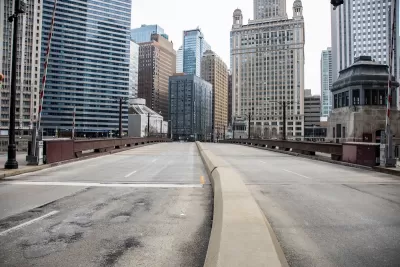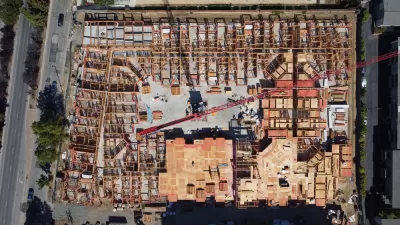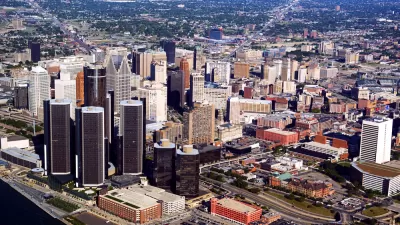Research shows that the “donut effect” hollowing out central business districts since the pandemic continues to cause economic decline in the 12 largest American cities.

New research from Stanford University economist Nicholas Bloom indicates that the structure of some of the largest U.S. cities remains fundamentally changed since the Covid-19 pandemic. Bloom has dubbed this the “donut effect,” referring to “the hollowing out of big-city financial districts, the rising attraction of surrounding areas, and the impacts on local economies.”
Bloom and his team conclude that downtown economies are not, in fact, bouncing back after the pandemic. According to Bloom, the 12 largest U.S. cities have lost 8 percent of their downtown residents, with two-thirds of those households migrating to suburbs. There was also an attendant drop in the number in businesses in downtowns in major metro areas. “The reason, according to the study’s authors, is because of the staying power of working from home – particularly for high-skilled workers who made up the bulk of downtown exits during the pandemic.”
This means a sharp drop in tax revenue and economic activity for cities, where officials must make difficult decisions to accommodate lower budgets. For public transit agencies, changes in travel patterns have led to sometimes devastating cuts in budgets and service.
Bloom points to one potential benefit of the effect, provided that housing costs go down. “As essential workers and others with lower-paying, in-person jobs get priced out of the suburbs, they might be able to afford living again in the big cities where they need to be every day.”
The donut effect is notably absent or limited in small and medium-sized cities, where more jobs require in-person attendance and housing costs are lower.
FULL STORY: For major U.S. cities, the ‘donut effect’ persists

Montreal Mall to Become 6,000 Housing Units
Place Versailles will be transformed into a mixed-use complex over the next 25 years.

Planetizen Federal Action Tracker
A weekly monitor of how Trump’s orders and actions are impacting planners and planning in America.

Four Reasons Urban Planners Can’t Ignore AI
It’s no longer a question of whether AI will shape planning, but how. That how is up to us.

Bend, Deschutes County Move to Restrict Major Homeless Encampment
City and county officials are closing off portions of an area known as Juniper Ridge where many unhoused residents find shelter, hoping to direct people to housing and supportive services.

High Housing Costs Driving Down Transit Ridership in LA
When neighborhoods gentrify and displace lower-income residents, transit ridership suffers, new research shows.

Iowa Legalizes Accessory Dwelling Units
A new law will allow property owners to build ADUs on single-family lots starting on July 1.
Urban Design for Planners 1: Software Tools
This six-course series explores essential urban design concepts using open source software and equips planners with the tools they need to participate fully in the urban design process.
Planning for Universal Design
Learn the tools for implementing Universal Design in planning regulations.
City of Mt Shasta
City of Camden Redevelopment Agency
City of Astoria
Transportation Research & Education Center (TREC) at Portland State University
City of Camden Redevelopment Agency
Municipality of Princeton (NJ)
Regional Transportation Commission of Southern Nevada





























